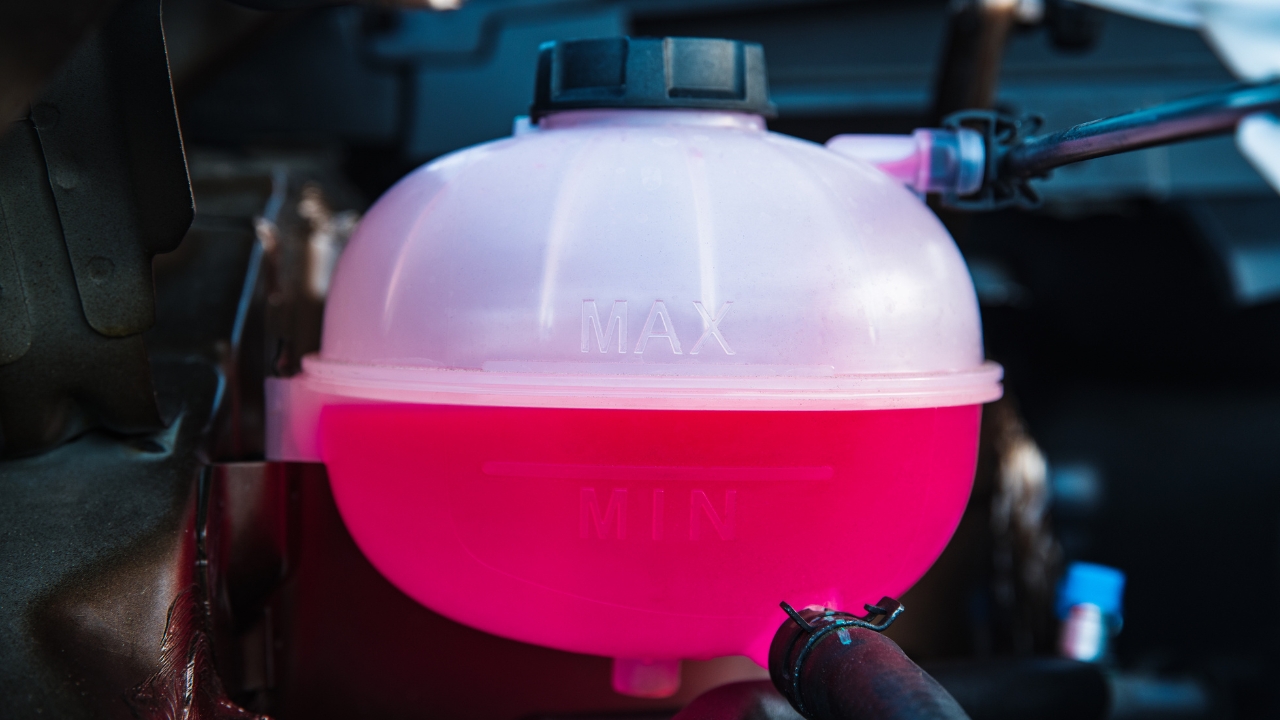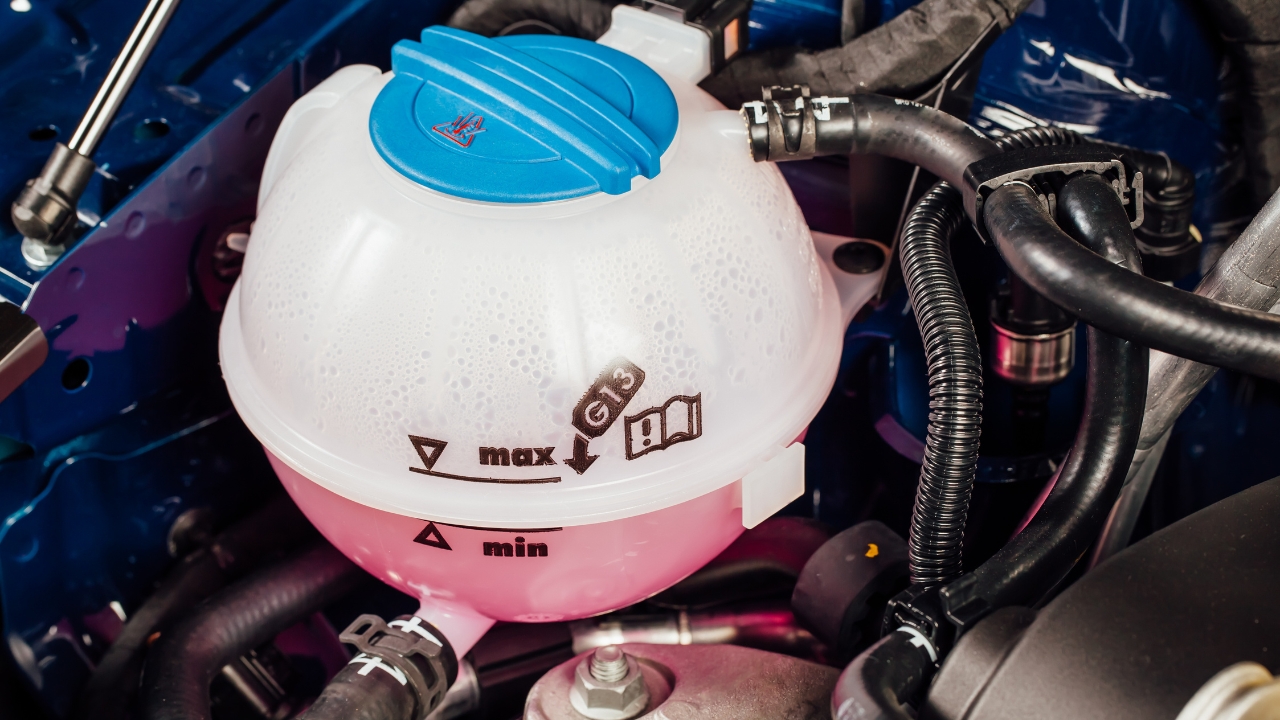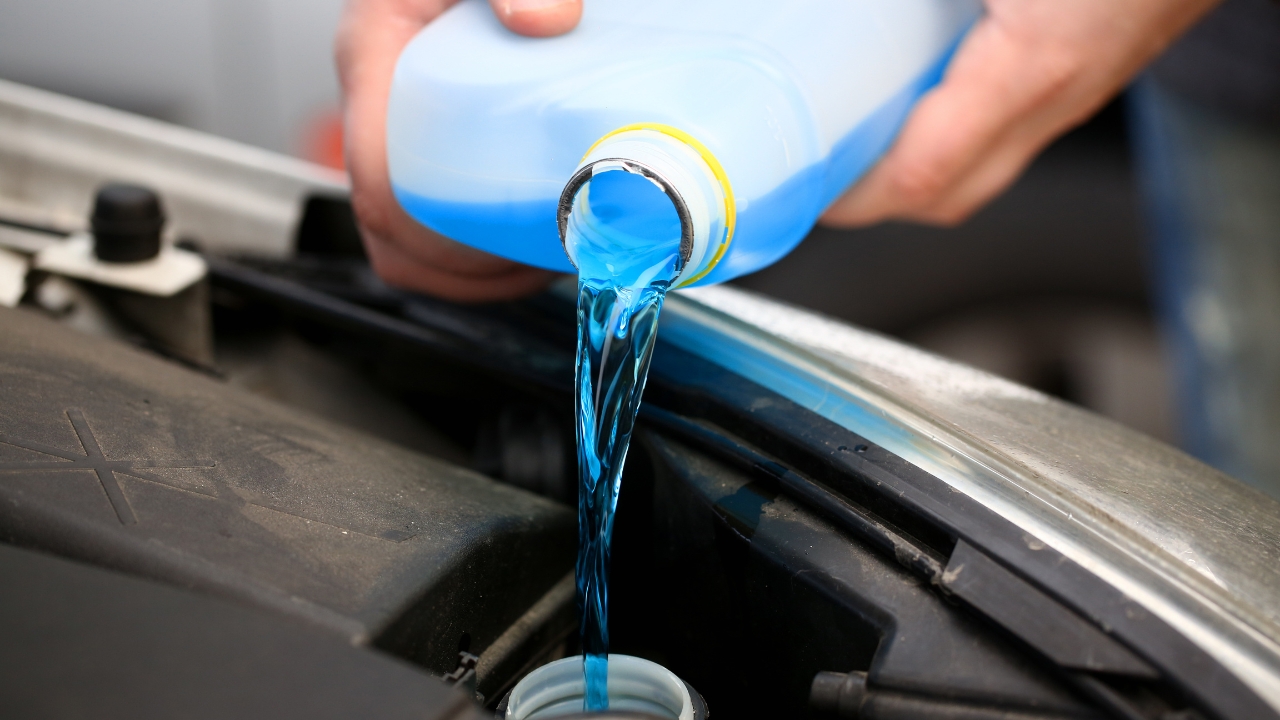When it comes to maintaining the health of your vehicle, understanding the distinctions between various automotive fluids is essential. Two of the most commonly confused fluids are coolant and antifreeze. While they are often used interchangeably, there are significant differences between the two. This comprehensive guide will delve into the five key differences between coolant and antifreeze, providing clarity and helping you make informed decisions about your vehicle’s maintenance. Understanding the difference between coolant and antifreeze is crucial for your vehicle’s health. If you ever find yourself stuck on the road due to overheating, don’t hesitate to call Crossroads Helpline for quick and reliable roadside assistance.
Composition and Purpose

Coolant and antifreeze are integral to a vehicle’s cooling system, but their compositions and primary purposes differ. coolant is typically a mixture of water and antifreeze. The most common form of antifreeze is ethylene glycol or propylene glycol, which are chemicals that lower the freezing point of the liquid and raise its boiling point.
Antifreeze is specifically designed to prevent the coolant from freezing in cold temperatures and from boiling in high temperatures. It’s a concentrated solution that needs to be diluted with water before use. In contrast, coolant, as the name suggests, is ready-to-use and often pre-diluted to a specific ratio suitable for a range of temperatures.
The primary purpose of coolant is to maintain an optimal operating temperature within the engine. It circulates through the engine, absorbing heat and releasing it through the radiator. Antifreeze, on the other hand, plays a critical role in ensuring that the coolant does not freeze or overheat, thus protecting the engine from temperature extremes.
Understanding these fundamental differences helps in comprehending why both terms are often used interchangeably but highlight different aspects of the fluid’s role in the cooling system. By knowing their distinct compositions and purposes, vehicle owners can better manage their car maintenance schedules and avoid potential engine damage caused by extreme temperatures.
Seasonal Use and Temperature Regulation

The terms coolant and antifreeze often lead to confusion regarding their use in different seasons. While coolant is designed for year-round use, antifreeze is specifically crucial for extreme temperature conditions. This distinction is vital for vehicle owners living in regions with harsh winters or very hot summers.
Coolant functions effectively in a wide range of temperatures, ensuring that the engine remains within an optimal operating temperature range. It prevents overheating in the summer by dissipating excess heat and prevents freezing in the winter by lowering the freezing point of the fluid. Most commercial coolants are pre-mixed to ensure a balanced performance in various climates.
Antifreeze, in its concentrated form, requires proper mixing to adapt to seasonal temperature changes. During winter, a higher concentration of antifreeze is necessary to prevent the coolant from freezing. Conversely, in summer, a slightly diluted mixture might be preferred to ensure effective heat dissipation. This adaptability makes antifreeze crucial for those living in areas with significant temperature fluctuations.
The seasonal use of these fluids highlights the importance of regular vehicle maintenance. Checking and adjusting the coolant mixture before the onset of extreme weather can prevent engine damage and ensure smooth performance. Understanding the role of antifreeze in temperature regulation also underscores the need for proper storage and handling, as improper mixing can lead to reduced efficacy and potential engine issues.
By comprehending the seasonal requirements and temperature regulation properties of coolant and antifreeze, vehicle owners can make informed decisions about fluid maintenance, ensuring their engines run smoothly throughout the year, regardless of the weather conditions.
Chemical Properties and Environmental Impact

The chemical properties of coolant and antifreeze significantly impact their performance and environmental footprint. Ethylene glycol and propylene glycol, the primary components of antifreeze, possess distinct chemical characteristics that influence their effectiveness and safety.
Ethylene glycol, commonly used in antifreeze, is highly effective at lowering the freezing point and raising the boiling point of the coolant mixture. However, it is toxic and poses significant environmental and health risks if not handled properly. Accidental ingestion of ethylene glycol can be fatal for humans and animals, and improper disposal can lead to environmental contamination.
Propylene glycol, an alternative to ethylene glycol, is less toxic and considered safer for both humans and the environment. It’s often used in environmentally friendly anti-freeze formulations. While it might be slightly less effective than ethylene glycol in extreme temperatures, its reduced toxicity makes it a preferred choice for eco-conscious consumers and those with pets.
Coolant, being a mixture of water and antifreeze, inherits the chemical properties of the antifreeze used in its formulation. Thus, the choice between ethylene glycol and propylene glycol antifreeze directly affects the overall safety and environmental impact of the coolant. Vehicle owners should be aware of these differences and opt for the safer, more environmentally friendly option whenever possible.
The environmental impact of these fluids also extends to their disposal. Used coolant and antifreeze must be disposed of according to local regulations to prevent soil and water contamination. Recycling programs and proper disposal facilities help mitigate the environmental risks associated with these chemicals.
Understanding the chemical properties and environmental impact of coolant and antifreeze is crucial for responsible vehicle maintenance. By choosing safer alternatives and adhering to proper disposal practices, vehicle owners can reduce their ecological footprint while ensuring their engines remain protected and efficient.
Longevity and Maintenance Requirements
The longevity of coolant and antifreeze and their maintenance requirements are key considerations for vehicle owners. These aspects significantly affect the overall cost of vehicle maintenance and the reliability of the cooling system.
Coolant, due to its pre-diluted nature and balanced composition, typically has a longer lifespan compared to pure antifreeze. Most modern coolants are formulated to last for several years or a certain number of miles, providing long-term protection against freezing, overheating, and corrosion. However, the longevity of coolant can vary based on the type of antifreeze used in the mixture and the operating conditions of the vehicle.
Antifreeze, being a concentrated solution, requires careful dilution and regular monitoring. The mixture ratio needs to be adjusted based on seasonal changes and the specific requirements of the vehicle’s cooling system. Regular checks and replacements are necessary to maintain the efficacy of the antifreeze and prevent engine damage. Neglecting these maintenance requirements can lead to issues such as coolant breakdown, reduced heat transfer efficiency, and corrosion of engine components.
Both coolant and antifreeze require periodic testing to ensure they are still effective. This involves checking the freezing and boiling points, as well as the pH level of the fluid. Using a refractometer or test strips, vehicle owners can monitor the condition of their coolant and antifreeze, ensuring they provide optimal protection.
Understanding the longevity and maintenance requirements of coolant and antifreeze helps vehicle owners plan their maintenance schedules more effectively. Regular monitoring and timely replacement of these fluids can prevent costly engine repairs and extend the lifespan of the vehicle. By staying proactive in fluid maintenance, vehicle owners can ensure their engines run smoothly and efficiently, regardless of external temperature changes.
Cost and Availability of Coolant and Antifreeze
Cost and availability are practical considerations that influence the choice between coolant and antifreeze. These factors can vary significantly depending on the type of antifreeze, the formulation of the coolant, and the specific needs of the vehicle.
Coolant, being a pre-mixed solution, is generally more convenient and readily available. It is sold in various formulations tailored for different vehicle types and climates. The cost of coolant is relatively stable, and it is widely available at automotive stores, service stations, and online retailers. This convenience makes coolant a popular choice for routine vehicle maintenance.
Antifreeze, in its concentrated form, can be more cost-effective in the long run, especially for those who prefer to mix their own coolant solutions. The initial purchase of antifreeze might be more expensive, but it allows for customization of the mixture ratio based on specific climate conditions and vehicle requirements. However, the cost of antifreeze can vary widely depending on whether it is ethylene glycol or propylene glycol-based, with the latter often being more expensive due to its lower toxicity and environmental benefits.
The availability of antifreeze can also be influenced by regional preferences and environmental regulations. In areas with stringent environmental laws, propylene glycol-based antifreeze may be more commonly stocked. Conversely, in regions where cost is a primary concern, ethylene glycol-based antifreeze might be more prevalent.
Considering the cost and availability helps vehicle owners make informed decisions based on their budget and environmental considerations. While coolant offers convenience and ease of use, antifreeze provides flexibility and potential cost savings. Understanding these factors allows for better planning and ensures that the chosen fluid meets the specific needs of the vehicle and the owner’s preferences.
Conclusion
While coolant and antifreeze are often used interchangeably, they serve distinct purposes and have different properties. By understanding their composition, seasonal use, chemical properties, longevity, and cost, vehicle owners can make informed decisions that enhance the performance and longevity of their engines. Proper maintenance and informed choices ensure that the cooling system operates efficiently, regardless of external temperatures, ultimately leading to a smoother and more reliable driving experience. Keep your engine running smoothly by knowing whether to use coolant or antifreeze. And remember, if you run into any trouble on the road, Crossroads Helpline is just a call away!

